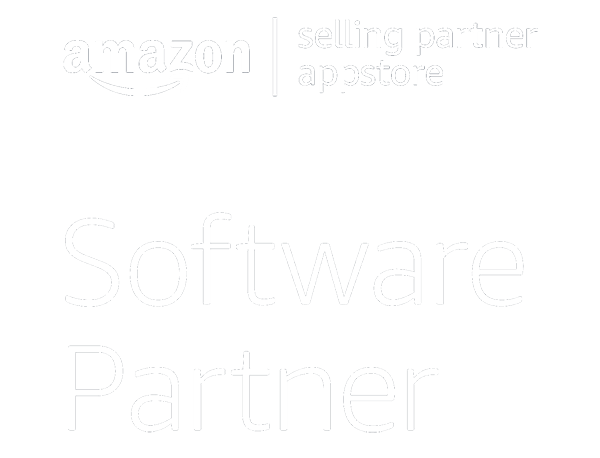Ecommerce profit margin measures how much money you make after subtracting your costs from your revenue. It’s calculated as a percentage and expressed as either gross or net profit margin.
Your profit margin is a critical success metric for the business overall, but it can also be used to compare products and SKUs, make ordering decisions, and plan for investment and growth.
A good profit margin for ecommerce businesses varies widely depending on the industry, market conditions, and the size of the company. Generally speaking, however, most ecommerce companies aim for at least 10% gross profit and 4%-7% net profit margins on their sales.
That said, some industries have higher margins than others. For example, online retailers that specialize in luxury goods typically have higher margins than mass market retailers selling everyday items. Whether or not a product is worth selling depends not only on the profit margin, but also on sales quantity and length of sales cycle.
In addition to looking at industry averages, there are a few other key indicators of a healthy margin. These include things like cost-per-customer acquisition, cost of goods sold (COGS), and customer lifetime value (LTV). All three of these metrics can help ecommerce businesses determine where their margins stand in relation to the competition. For the purpose of this post, we will focus on profit margin—different ways to measure, how to interpret your numbers, and how to improve your net profit margin.
Two Types of Profit Margin
There are multiple ways to measure profit margin in ecommerce. Here are the two most important:
Gross Profit Margin
Your sales revenue minus the cost of production provides your gross profit margin. In ecommerce, it is often used to compare products and SKUs, as it isolates only the sales and the COGS to generate those sales.
Here’s how to calculate gross profit margin:
Net sales – cost of goods sold
Net sales
Gross profit margin does not subtract for taxes, administrative costs, and other expenses that may ultimately impact the bottom line.
Net Profit Margin
How profitable is your business? Long term planning and growth depend on this answer. Gross margin helps you calculate how much money you made from individual products, but it doesn’t paint the entire picture.
Net profit indicates how much money your company makes in a given period of time. To calculate net profit margin in ecommerce, subtract all expenses from your total revenue in a given period. This includes COGS, labor, interest, taxes, administrative costs, returns… and any other expenses. That number is your net profit. To find the margin, use this formula:
Net profit / total revenue x 100 = Net Profit Margin
So what’s a good net profit margin in ecommerce? That depends. The higher your volume of sales, the lower margin you can live with. If you move high demand products on the cheaper end of the spectrum, you could sell thousands of units at a 3-5% profit margin. This would produce as much or more profit than selling a few dozen lower demand, higher priced items at 20% profit. Many ecommerce businesses sell a variety of products, so it’s important to track margins individually and as a whole.
How to Measure Profit Margin in Ecommerce: Examples
As you can see, measuring profit margin is relatively straightforward. To calculate gross profit margin, subtract the cost of goods sold (COGS) from your total revenue and divide that figure by total revenue. For example, if you have total sales of $10,000 and COGS of $6,000, your gross profit margin is $4,000. And your gross profit margin is 40%.
This can be valuable information to compare products, SKUs, and seasonality. But the overall health of your business is better measured through net profit.
To use the same example: if you have total sales of $10,000, COGS of $6,000, and additional expenses of $2,500 after taxes, labor, bank fees, and currency exchange from supplier payments, your net profit is $1,500. In this case, your net profit margin is 15%.
As you can see, it’s easy to miscalculate the health of your business by looking only at gross profit. This is especially true in ecommerce, where business owners are often hyper-focused on cost of goods and sales revenue.
How to Improve Your Profit Margin in Ecommerce
Improving your profit margins is essential for the success of any ecommerce business. Fortunately, there are several strategies you can use to improve your margins. Here are five of them.
Increase Prices
One way to increase your bottom line is by increasing prices. Research what other sellers in your industry are charging and look at ways to differentiate yourself to justify a premium price. As your positive reviews increase and your listings improve, you can likely charge a premium to move the same amount of inventory.
Drive Down Costs
Examine where you’re spending money and identify areas where you can reduce costs without sacrificing quality or customer service. This could include negotiating better rates with suppliers, committing to a larger volume, optimizing your advertisement investments, or streamlining your shipping and fulfillment process. You should also evaluate your banking and funding costs to see if there are better options.
Increase Efficiency
Invest in automated tools and technologies that can help streamline your workflow and reduce the time needed to complete tasks. This will allow you to do more with less, enabling you to focus on growing your business rather than getting bogged down in mundane tasks. There are all kinds of digital tools at the ecommerce seller’s disposal. Invest wisely to tighten your business operations.
Optimize Your Marketing Spend
Revisit your marketing budget and determine which channels deliver the best ROI for your business. You may find that some channels are more cost-effective than others, allowing you to reallocate funds towards those that generate the most revenue. You can also consider seasonal marketing campaigns to maximize sales when demand is highest. For most ecommerce sellers, PPC is necessary, but it should provide tangible return.
Manage Cash Flow
Managing cash flow is key to ensuring that you have enough funds available to cover expenses and stay profitable. This includes tracking accounts receivable and accounts payable, as well as ensuring that you’re collecting payments on time. Many ecommerce businesses deal with cash flow challenges due to payout delays from marketplaces.
In this case, it often makes sense to leverage ecommerce funding to fill the gaps.
By following these tips, you can ensure that your e-commerce business remains profitable while also providing customers with a great product or service at a competitive price.




